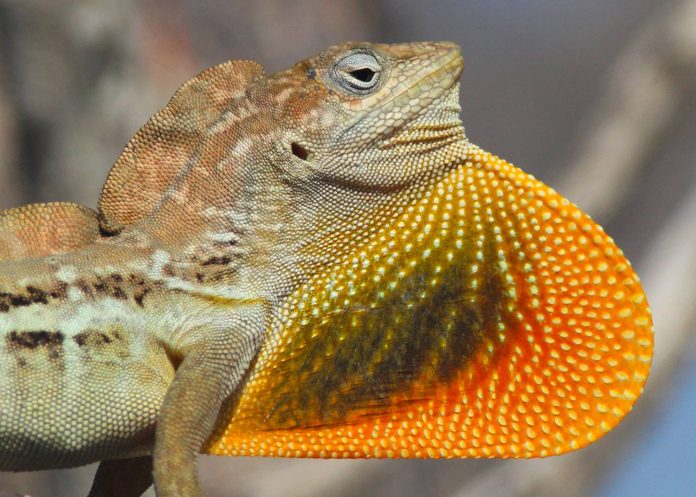From 26 July to 1 August, Fundacion Parke Nacional Aruba (FPNA) celebrates its first ever Conservation Week, an awareness event that the nature conservation organization intends to repeat in the coming years.
Natasha Silva – Chief Conservation Officer – explains why such an event is important: “Well, at FPNA we are noticing an increase in public interest in nature and sustainability related topics, while at the same time we’re witnessing an increase in threats to our island’s biodiversity and the conservation of ecosystems and habitats.” While her answer may surprise you, especially in the celebratory wake of recently acquiring 16 new nature reserves, Silva continues with: “Let me explain …”
The current global and local environmental challenges have drastically changed the way we do nature conservation over the last decades. We have to deal with apocalyptic, global threats like climate change and ocean acidification. While at a local level our conservation work is challenged by an increase in the human population and tourism, overstretching the island’s carrying capacity, land conversion, desertification and freshwater withdrawals, soil deterioration (erosion, salinization, and soil fertility loss), pollution (air, water, land – including toxic substances), coastal development, deteriorating ecosystems health, (marine) overharvesting, introduction of invasive species such as tilapia, boa and cane toads, and biodiversity loss.
The Lora (yellow-shouldered parrot) and the Paloma Azul (scaly-naped pigeon) have already become extinct on Aruba, the charismatic Patrishi (crested bobwhite) and Conew (cotton-tailed rabbit) have almost disappeared, and iconic endemic species such as Cascabel (Aruba island rattlesnake), Prikichi (Aruban brown-throated parakeet), Shoco (Aruban burrowing owl) and numerous species of flora are now endangered, some even critically. Silva exclaims: “We must prevent further extinction, as with the disappearance of species and habitats, we are also losing our Aruban identity.”
At the same time there’s reason to celebrate. Only last week, 16 new nature reserves were brought under the management of FPNA. Together with the previously protected Arikok National Park and Ramsar area Spaans Lagoen, Aruba’s protected areas contain important ecosystems and habitats – such as arid, xeric shrubland, vulnerable dune areas with characteristic vegetation, hilly landscape, wetlands, watershed and drainage areas – which are home to many often vulnerable, endangered, and/or endemic species, including 10 species of terns, bats, frogs and numerous insects such as butterflies and other pollinators. Now more than 20% of the island is officially protected and the foundation also manages four Marine Protected Areas (MPAs) which collectively form the Parke Marino Aruba (6020 hectares). Although this may seem like a lot, the entire island and coastal seas are needed to prevent populations of flora and fauna from going extinct.
FPNA is already working on a Shoco recovery program together with Aruba Birdlife Conservation and the Global Owl Project and will continue the coming years to further develop numerous other conservation programs together with local and international organizations. Partnership is key. However, working on biodiversity recovery and increasing ecosystem health alone is not enough.
Silva: “As a community, we need to change our way of thinking and develop sustainable behaviors. We need to start seeing the island as one big ecosystem and see us humans as part of this system. Nature is not something out there. Nature is all around us and humans are an integral part of nature. This way of thinking does not limit nature to protected areas only. After all, nature does not adhere to human induced boundaries: there are also Cascabel, Shoco and Prikichi living outside of our nature reserves in areas which under the national Spatial Development Plan (2019) are designated as ‘Natuur en landschap’, ‘Landelijk gebied’ and even in urban areas. All these spaces need to be connected by so-called ‘green corridors’, for wildlife to follow their natural rhythms and safely travel from one area to another. However, we can also go a step further and make our urban areas nature rich and nature friendly. This would be truly working towards finding a balance by building and living with nature.” “If we manage to achieve this then I believe that Aruba will be a wonderfully unique place and an example to the world!” Silva claims. “Moreover, safeguarding our natural resources will benefit our economy. Destroying them will negatively impact our economy, including our fisheries and tourism.”
FPNA’s 2020 Conservation Week specifically celebrates Aruba’s unique and protected nature with several conservation events, a webinar with FPNA’s conservation experts, an online conservation quiz, and a rough hike in the national park.
FPNA will continue stimulating awareness and working hard the coming years towards contributing to a sustainable future for Aruba’s people and a resilient, species-rich and diverse nature.
Silva ends: “Aruba’s beautiful, unique and fragile nature is a common good. Tackling threats, forwarding nature conservation and working towards a sustainable future is by extension the responsibility of us all: nature NGOs, government, private sector and the community at large”. (www.arubanationalpark.org/).




















